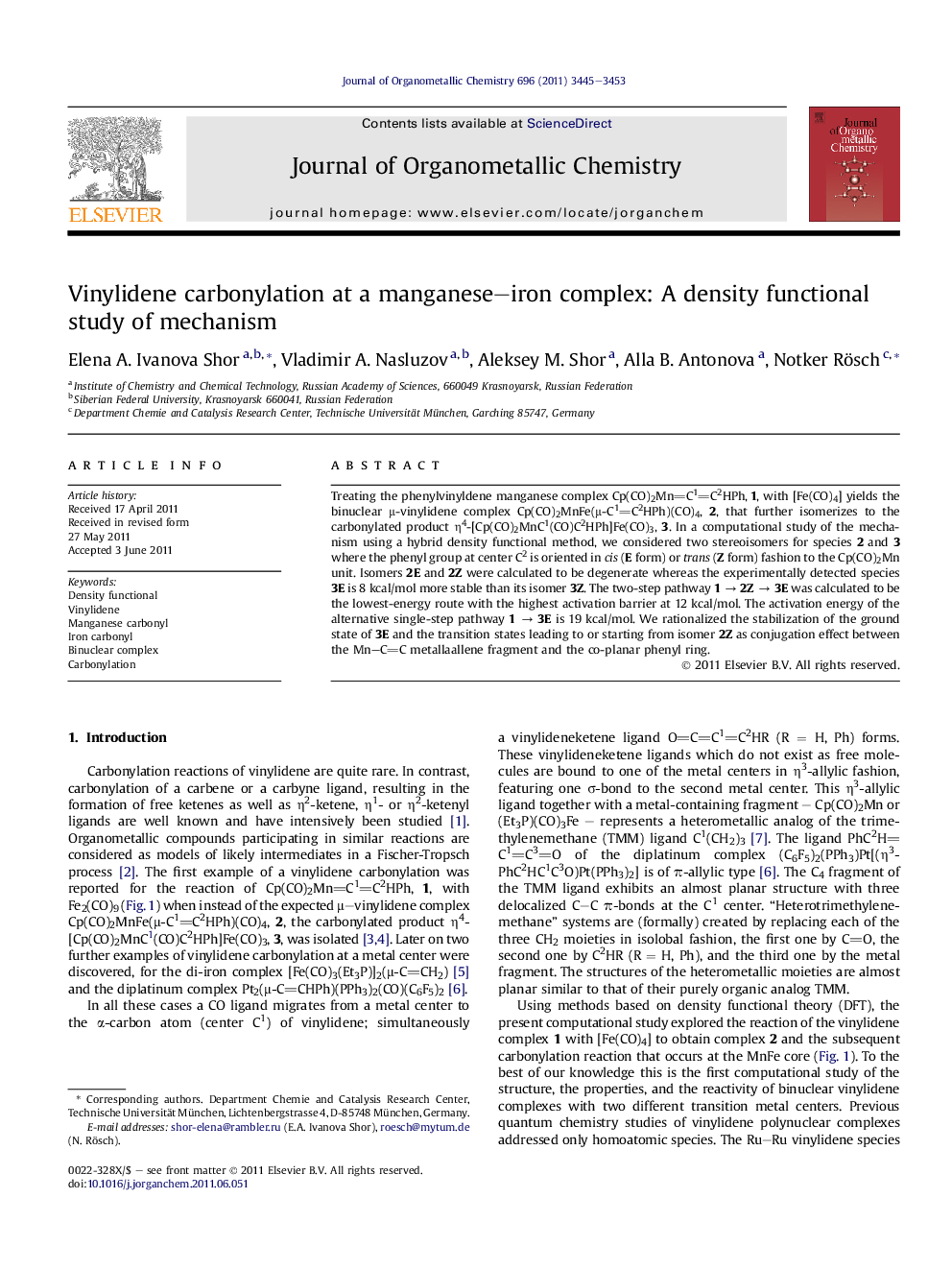| کد مقاله | کد نشریه | سال انتشار | مقاله انگلیسی | نسخه تمام متن |
|---|---|---|---|---|
| 1322231 | 977189 | 2011 | 9 صفحه PDF | دانلود رایگان |

Treating the phenylvinyldene manganese complex Cp(CO)2MnC1C2HPh, 1, with [Fe(CO)4] yields the binuclear μ-vinylidene complex Cp(CO)2MnFe(μ-C1C2HPh)(CO)4, 2, that further isomerizes to the carbonylated product η4-[Cp(CO)2MnC1(CO)C2HPh]Fe(CO)3, 3. In a computational study of the mechanism using a hybrid density functional method, we considered two stereoisomers for species 2 and 3 where the phenyl group at center C2 is oriented in cis (E form) or trans (Z form) fashion to the Cp(CO)2Mn unit. Isomers 2E and 2Z were calculated to be degenerate whereas the experimentally detected species 3E is 8 kcal/mol more stable than its isomer 3Z. The two-step pathway 1 → 2Z → 3E was calculated to be the lowest-energy route with the highest activation barrier at 12 kcal/mol. The activation energy of the alternative single-step pathway 1 → 3E is 19 kcal/mol. We rationalized the stabilization of the ground state of 3E and the transition states leading to or starting from isomer 2Z as conjugation effect between the Mn–CC metallaallene fragment and the co-planar phenyl ring.
A density functional B3LYP study has been performed to clarify the mechanism of [Fe(CO)4] addition to the manganese vinylidene complex Cp(CO)2MnCCHPh with the formation of the carbonylated product η4-[Cp(CO)2MnC(CO)CHPh]Fe(CO)3. The lowest-energy path was calculated to proceed via a μ–vinylidene intermediate. The structures of the transition states and the product exhibit co-planar Mn–C–C and C6H5 fragments.Figure optionsDownload as PowerPoint slideHighlights
► Reaction mechanism of the interaction of Mn vinylidene complex with Fe tetracarbonyl.
► Vinylidene MnFe isomers are degenerate, carbonylated products differ by 8 kcal/mol
► CO migration to atom C1 proceeds in two steps via binuclear mu-vinylidene complex.
► Direct migration of CO to atom C1 requires 7 kcal/mol more than two-step route.
► Conjugation between Mn–CC and C6H5 ring stabilizes the ground and transition states.
Journal: Journal of Organometallic Chemistry - Volume 696, Issue 22, 1 November 2011, Pages 3445–3453